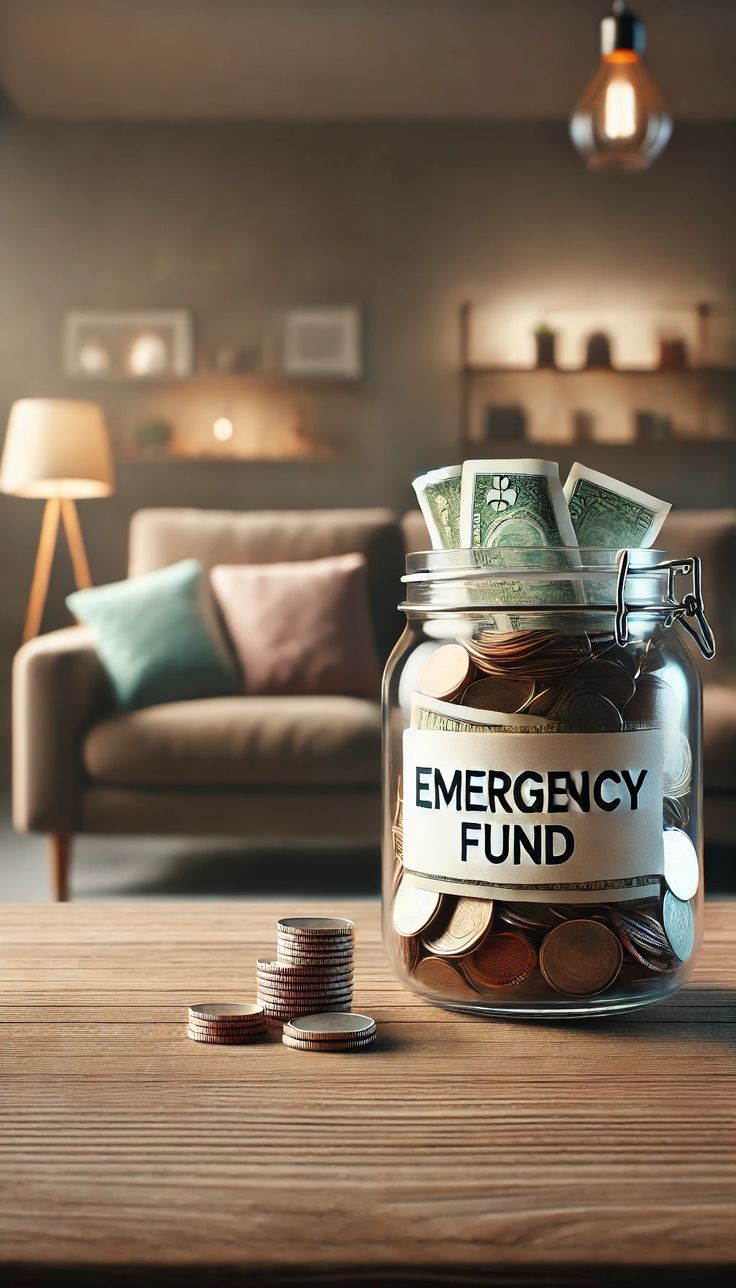Emergency Fund: The Essential Safety Net for Financial Stability
An emergency fund is one of the most crucial financial tools an individual can have. It serves as a financial cushion during unexpected life events, providing peace of mind and reducing the stress of unplanned expenses. Whether it’s a sudden medical emergency, car repair, or job loss, an emergency fund ensures that you’re not forced to borrow money or rely on credit cards to cover unforeseen costs.
In this article, we will explore the importance of an emergency fund, how to build one, and the benefits it provides in achieving financial stability.
What Is an Emergency Fund?
fund is a savings account that is specifically set aside for unforeseen circumstances. It’s different from regular savings because its primary purpose is to handle emergencies—those situations that are unavoidable and often require immediate attention.
It acts as a buffer to ensure that you don’t need to dip into long-term savings or investments, which could hinder your financial growth or retirement plans.
Why Is an Fund Important?
1. Protection Against Unexpected Expenses:
Life can be unpredictable. Whether it’s a medical emergency, car breakdown, home repair, or even losing your job, emergencies can lead to significant financial strain. Having an emergency fund ensures that you’re prepared for these events without going into debt.
2. Reduces Stress:
Knowing that you have a financial cushion to rely on in times of trouble can greatly reduce anxiety. It allows you to handle crises with a clear mind, rather than stressing about how to pay for unexpected costs.
3. Avoiding Debt:
Without fund, many people turn to credit cards or loans to cover emergency expenses. This can lead to high-interest debt that can take years to pay off. An emergency fund helps you avoid this scenario, allowing you to pay for emergencies without going into debt.
4. Provides Financial Flexibility:
When you have an emergency fund, you have the freedom to make decisions based on your well-being and priorities, rather than feeling obligated to make rushed financial decisions to avoid debt.
How to Build an Fund
1. Set a Target Amount:
The general recommendation is to save at least three to six months’ worth of living expenses. However, this amount can vary depending on your situation. For example, if you have dependents or an unstable income, you might want to aim for a larger emergency fund.
2. Open a Separate Account:
To ensure that you don’t dip into your emergency fund for non-emergencies, open a separate savings account. This could be a high-yield savings account or a money market account that offers easy access but limits the temptation to use the funds for regular expenses.
3. Start Small and Be Consistent:
Building fund doesn’t happen overnight. Start by saving a small, manageable amount each month, and gradually increase it as your financial situation improves. For example, set aside $100 per month initially, then raise the amount as you can afford it.
4. Automate Your Savings:
Consider setting up automatic transfers from your checking account to your emergency fund savings account. Automating this process ensures that saving becomes a habit and prevents you from forgetting or skipping contributions.
5. Prioritize Your Emergency Fund:
Treat your fund as a top priority. While it’s tempting to spend on non-essential items, remember that having a safety net will give you more financial freedom in the long run.
Where Should You Keep Your Fund?
Your fund should be easily accessible in case of an emergency, but also secure enough to earn a small return. Here are a few options to consider:
1. High-Yield Savings Account:
A high-yield savings account offers better interest rates than a traditional savings account while still providing easy access to your funds.
2. Money Market Account:
Money market accounts are similar to high-yield savings accounts but often come with higher minimum balance requirements. They offer liquidity and a slightly higher return, but you should ensure that the account is FDIC-insured.
3. Certificates of Deposit (CDs):
If you are able to lock your fund away for a short period (such as six months to one year), a CD might offer a higher return. However, CDs come with penalties for early withdrawal, so they should not be used for emergency savings unless you’re comfortable with limited accessibility.
Myths Debunked
1. “I Don’t Need an Emergency Fund If I Have Insurance”:
While insurance is essential, it doesn’t cover every potential emergency. For example, health insurance may not cover all medical costs, and home insurance may not cover the full cost of certain repairs. An emergency fund fills in the gaps.
2. “I Can Just Use Credit Cards in an Emergency”:
Credit cards may seem like an easy solution, but relying on them can quickly lead to high-interest debt. An emergency fund is a much more cost-effective and sustainable option.
3. “It’s Too Hard to Save for an Emergency Fund”:
Building fund takes time, but it’s a manageable goal if you start small and stay consistent. Even saving $50 per month adds up over time.
Tips for Maintaining
1. Only Use It for Emergencies:
It can be tempting to dip into your fund for non-emergencies, but remember that this fund is for unexpected situations. If you find yourself using it for regular expenses, reconsider your budgeting habits.
2. Replenish It After Use:
If you do have to use your fund, make it a priority to replenish it as soon as possible. Use any extra income or savings to build it back up to your target amount.
3. Regularly Review Your Fund’s Sufficiency:
As your life changes (such as a new job, marriage, or having children), your emergency fund needs may also change. Reassess your target amount every few months to ensure it aligns with your current expenses.
Benefits of Having
- Peace of Mind: Knowing that you have financial backup when life happens helps you feel secure and confident.
- Protection Against Financial Setbacks: fund prevents you from sinking into debt when emergencies arise.
- Improved Financial Planning: With an emergency fund, you can focus on long-term financial goals like investing, saving for retirement, and more.
- Increased Financial Flexibility: The fund gives you the freedom to make decisions based on what’s best for your well-being, not out of financial desperation.
Conclusion
It is one of the most fundamental aspects of sound financial planning. It provides financial protection and peace of mind when life’s unexpected events occur. By setting realistic goals, being consistent with your contributions, and keeping your emergency fund separate from your other savings, you can ensure that you are financially prepared for anything that comes your way.
Whether you’re starting from scratch or building on an existing fund, remember that the most important thing is to take the first step. Every contribution, no matter how small, moves you closer to financial security.










